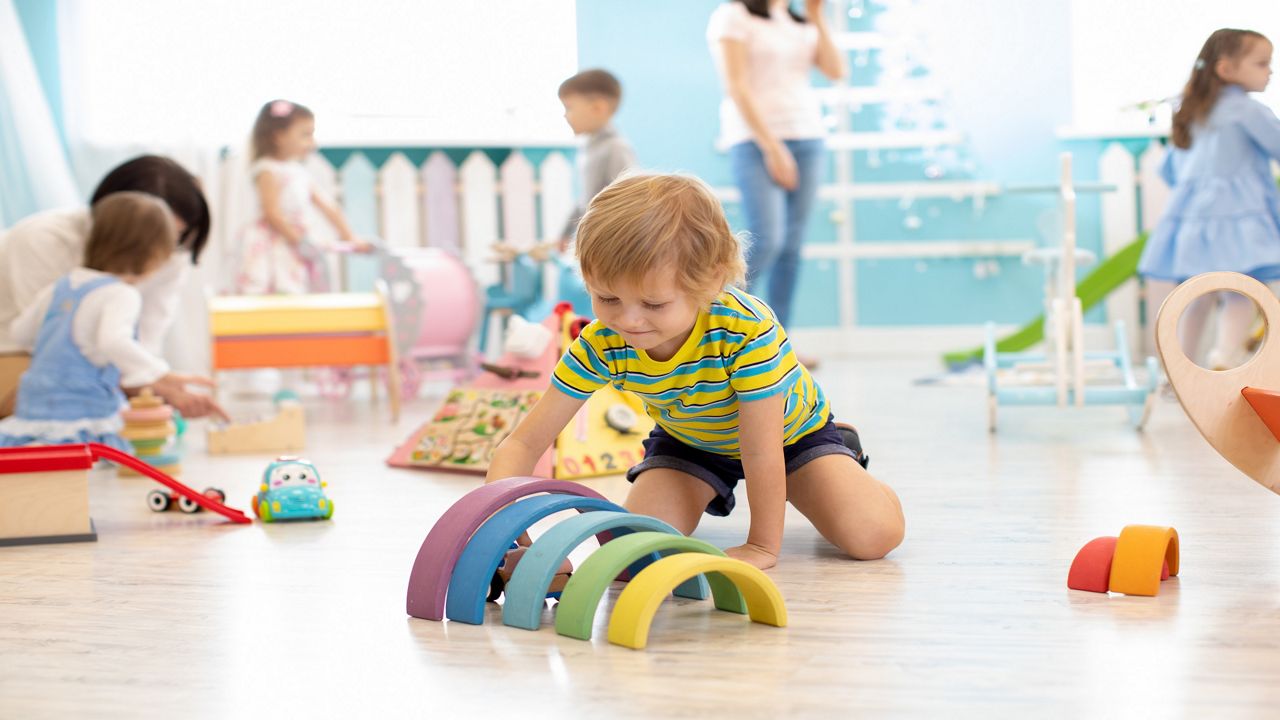NIAGARA FALLS, N.Y. — The kids are heading for school break again. One place you might find yourself is an aquarium. Have you ever wondered how they train fish you touch and feed?
Fish are a lot smarter than we give them credit for. That’s the first thing we learned. But we also learned there’s a greater lesson to feeding the fish.
“Each animal in here has their own designated spot and feed cup," said Dan Weinberg, an aquarist at the Aquarium of Niagara.
After getting that feed cup, it’s time for the emoji frisbee.
“I'm not quite sure of the reason why it works," Weinberg said. "It does. It does work. It's easier to see.”
The reason is simple, to give each group of rays a specific target. This way they know where their food will be, even when there’s a sea of hands in the water.
“So, this ray would actually go to another feeding station," Weinberg said. "So, we don't want to encourage that behavior.”
Six Yellow rays, two Atlantic rays and four sharks each have designated areas, so the team has a good idea of how much they’re eating. Like giving your pup a treat for good behavior, they are rewarded.
“We use positive reinforcement," Weinberg explained.
That includes keeping flat when feeding.
“Yeah, they do like to eat,” Weinberg laughed.
Rafael Calderon, in short, oversees the animal health programs. The process of getting a touch and feed exhibit in place is extensive. While your experience is important, designs are done to benefit the animals, too.
“We give animals the choice whether they want to be touched or if they want to be near humans," Calderon said. "So if you take a close look at our exhibit, there is actually a second-tier shelf that's a little bit higher up where people can actually reach. But if they don't feel like being touched, they go to the deeper parts where humans can't reach them.”
When exhibits are closed, it’s to give animals a rest. Others are downstairs waiting to be placed into Shark Ray and Bay. This serves as the first lesson to exhibits like this, respect.
“It’s really important to educate everyone about what's going on in the world," said Tiffany Green, an educator at the Aquarium of Niagara. "And by having 120 species here, we have this really amazing opportunity to have these animals as ambassadors for their species.”
Green says conversations on triumphs and challenges the animals face follow an encounter.
“And learn ways that they can help these animals," Green said. "Not only in their day-to-day lives, but even on a larger spectrum, you know, talking about making political changes or even going out and volunteering.”
It all starts with something as simple as feeding a sea anemone.
“They get to experience animals that they may not get to experience in a very unique way," Weinberg said. "And hopefully they leave with the message of being able to want to help with conservation and making sure that these animals are around for future generations.”
For folks who plan on heading to Niagara Falls at any point this break, the Maid of the Mist opens on April 4. The new visitor center is open and the Great Lakes 360 exhibit, which is an expansion of the aquarium, will be opening in a couple of months.
And if you're left wondering how they choose which animals are part of a touch exhibit, Weinberg said rays are known for being OK to human touch. So that’s why we typically see them. The process to get them desensitized starts during construction in separate areas, over several months.








